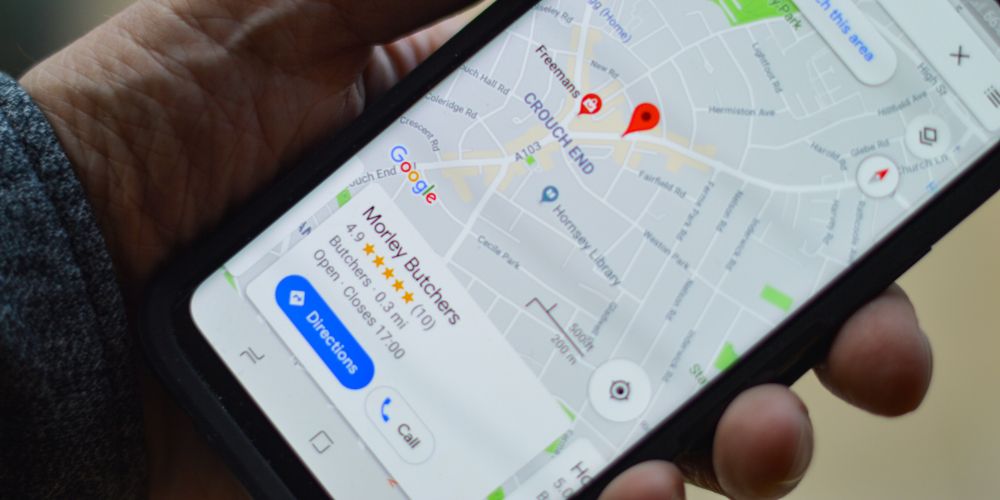Businesses spent more than $47 billion on SEO in 2020. Studies by the Business Research Company suggest that the value of SEO as an industry will reach nearly $80 billion by the end of 2023. The popularity of SEO keeps increasing as many major trends evolve, making it harder for some companies to stay on top of things regarding Google rankings.
I am not here to tell you that getting your SEO numbers up in today’s highly saturated market is not hard. For the most part, everyone, from the most successful marketer to the random guy who just started a blog today, never finds SEO to be a straightforward topic. But there are specific ways I have discovered to make your SEO journey manageable. Here are a bunch of SEO hacks you need to know to rank on Google.
1. Identify & specialise in specific niches

When I launched my first website years ago, I wish I had known the importance of niches. Rule number one: don’t underestimate the boring stage of researching niches for your gold mine. Content is key, but finding a good niche can massively help the potential of your website.
Shoulder niches (also known as smaller sub-niches that are relevant to your main niche) make it easier to create shareable content for your target audience. Identifying and creating content in your shoulder niches can help drive traffic through potentially uncompetitive and untapped sections of the market. These smaller niches usually have smaller keyword search volumes but make up for that with competitiveness.
2. Target long-tail keywords

Long-tail keywords are keywords that are longer or more specific; they often cover more informative or navigational types of keywords. For example, if a short-tail keyword in your niche is ‘healthy snacks’, a mid-tail keyword would be ‘healthy vegan snacks’, then a long-tail keyword would be ‘how to make healthy vegan snacks’.
As you can guess, long-tail keywords are easier to rank for. Similar to shoulder niches, they tend to be less competitive and hold lower search volumes – however, long-tail keywords tend to drive traffic with a higher intent to buy or convert due to how specific they can be.
You can target long-tail keywords by optimising your content and onsite elements. It’s important that you also base your content around these long-tail keywords and support those articles with further related topics. Take a read of this guide on topic clusters to fully understand how to beef out the content on your site.
3. Create evergreen content

Most people in SEO, content marketing, or web marketing have probably come across the term “evergreen content” at some point and been told that their site needs it. Evergreen content is a type of content that remains relevant for readers over time, essentially meaning the article will age well. Here are some examples of topics that would be considered evergreen content:
- How to build a greenhouse
- 10 delicious cocktails you can make at home
- Top tips when decorating your living room
If you want your website to rank well, consider basing your evergreen content around key phrases that relate to your business. The easier it is for people to find your article online, the more likely it is to be shared and linked, driving traffic to your website for months or even years.
4. Build backlinks

A backlink is a link from another website; it’s a key ranking factor within Google’s algorithm. Building backlinks from high-authority sites and publications can dramatically drive your organic growth. The higher the number of quality backlinks your site has tends to affect how well it ranks on the search results page.
To put it simply, backlinks are essentially votes from other websites. These help Google understand how valuable and useful your web pages and content are. There are multiple ways of building links, from guest posts to journalist requests, which are covered in my link-building guide.
5. Best practice on-page SEO

A key element of my SEO consultant services, on-page SEO, is the practice of improving a website’s content, tags, and internal links to enhance search visibility. Crawlers, or spiders, are sent out by search engines to explore the web. They travel from one site to another via links, creating a map of the information known as a search index. These crawlers are also assessing the content of each site while in the course of looking for places. The search engine’s algorithm uses this information to determine how well the material on that specific site resolves user queries. There are many onsite elements that you need to ensure are optimised and quality-checked, which include:
- Content’s E-A-T (expertise, authoritativeness and trustworthiness)
- Relevant keywords
- Readable optimised and formatted content
- Visual assets such as videos and images
- Detailed title tags and meta descriptions
- Optimised alt tags and compressed images
- Site speed
- Responsive web design
- Structured URLs
- Outbound and internal links
6. Utilise video and visuals

About 72% of online consumers prefer information delivered through visuals. About 96% of consumers turn to audiovisual tutorials to learn more about a product. If all these statistics are not convincing enough for you, ask yourself when was the last time you read a full-blown article just to figure out how an app works? Communication has become fast-paced as internet usage grows worldwide and numerous technologies evolve. One thing evolving with this fast-paced disruption is the attention span.
Across the globe, the average online user’s attention span has grown thinner. A well-cut video, high-quality photo, or funny meme is what it will take for this user to stop and soak in particular information beyond six seconds. This means you’ll lose out on a ton of traffic if your blog or content is not optimized with visuals. Unsurprisingly, video content accounts for 82% of all internet traffic by the end of 2022.
7. Build your social media presence

Social media is an open secret to SEO success, yet only a few people are able to harness this opportunity. It might not directly boost your ranking, but it is a great source of traffic, giving Google the impression that your website could be highly valuable to users if prioritized in its ranking scheme. Whether it’s social media advertising or just organic posting, social can boost your brand online.
Pro tip: Social media profiles are often ranked higher than other search results. Check your favourite consumer brand, and you’ll find their Instagram, Facebook, and other social media sites on the first page.
8. Build up your Google reviews

In the world of marketing, word of mouth is liquid gold. But just one negative thing about your brand can plunge your brand value. People saying positive things about your brand works better than the best copies you can engineer for your ads. And Google reviews signify to Google that you’re legit. To improve your Google rank through SEO, encourage users to leave reviews.
9. Delete poor-performing pages

Also known as a ‘zombie page’, it is a term for non-functional web pages which don’t generate traffic for your website. It’s tempting to ask how a non-functional page on your page determines your position on Google. If this page doesn’t generate any good backlink building or organic traffic then you can consider it a zombie page. Google has established emphatically that it’s going content-specific. This means it prefers multiple quality content constituting a single valuable page to having multiple smaller pages on your website without proper content. Take HubSpot removing 3,000 of their pages as the perfect case study to boost your SEO efforts.
10. Speed up your website

It’s 2022, and the mobile phone is the most common tech device. According to recent statistics from Statista, the global mobile phone proliferation rate stands at 78%. And it’s only fair that Google prioritizes mobile optimisation in its SEO ranking scheme. And for that matter, Google has a specific tool focused on penalising pages that load slowly on mobile.
Audit your website and identify factors limiting performance. It can be as unassuming as your third-party scripts. They can stop a user’s browser from parsing HTML, leading to page delays, especially for users with slow internet.
Generally speaking, your business could be growing every time a user searches a term that revolves around your brand. And to put that in context, 81% of modern online users research products before patronizing them. That’s how important SEO is for businesses today. The good thing about these hacks is that they benefit large companies like they do startups.




